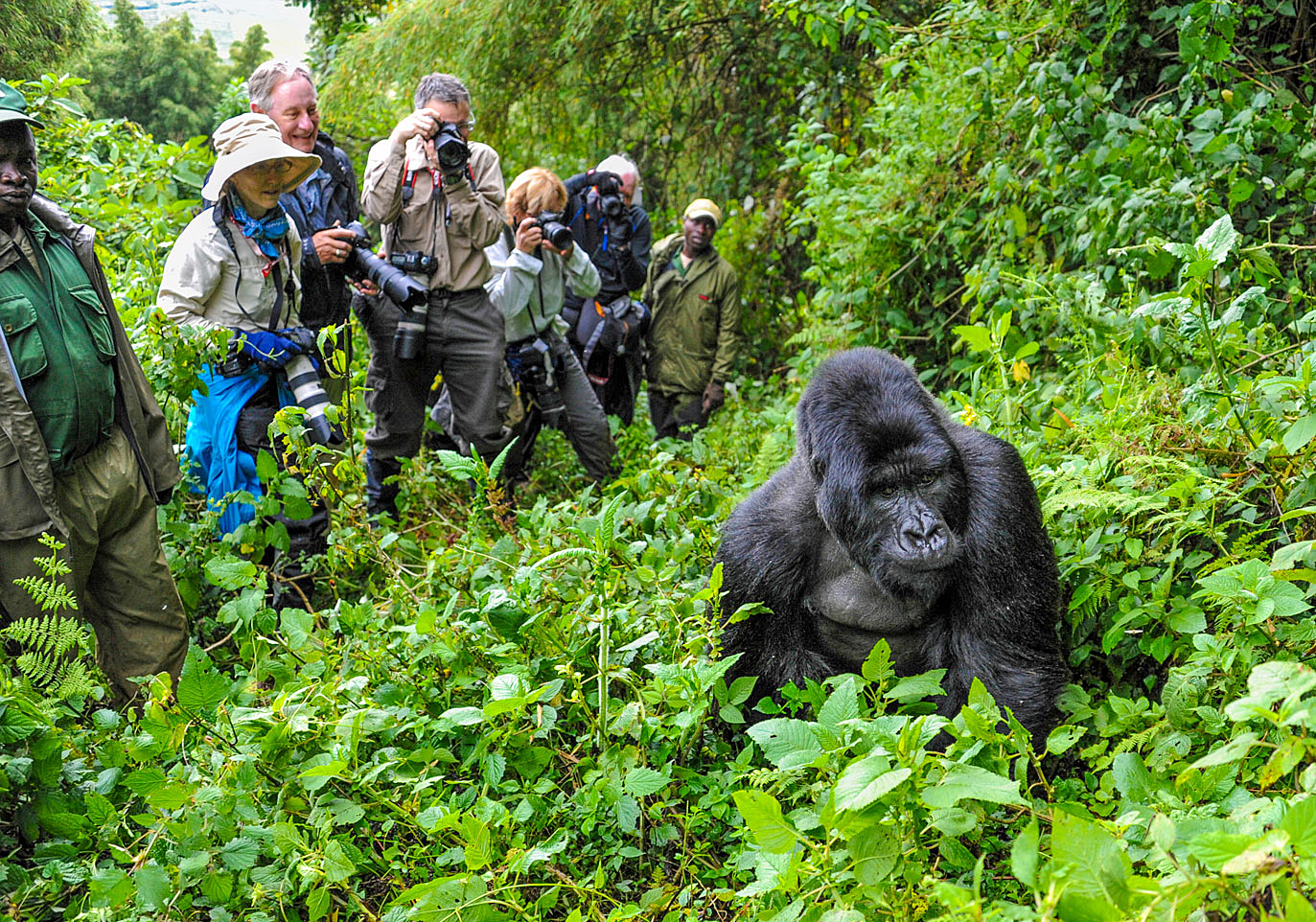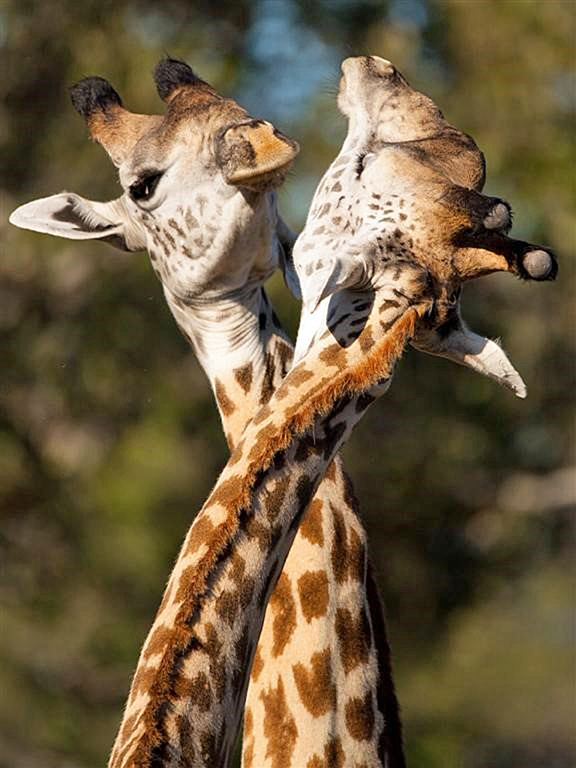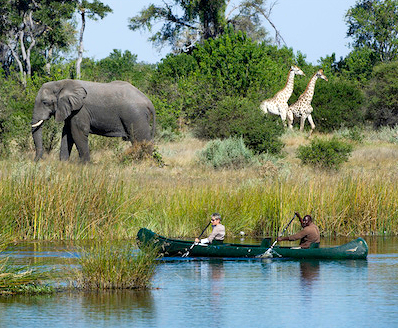
Creatures in the wild don’t magically appear at a safari guide’s whim. But it certainly looks that way for one company that specializes in safaris that require a high level of wildlife expertise, often seeking rare animals and conducted in non-commercial destinations.
Wild Planet Adventures has spent 25 years honing techniques to observe some of the world’s rarest animals in their native habitats. They make special arrangements for exclusive site access and feature exclusive activities that allow silent approach to animals. They bring together scientific researchers and biologist guides to take advantage of wildlife migrations, seasonal courtship, nesting and peak activity times for up-close encounters in virtually unknown destinations.
2016 marks Wild Planet’s 25th anniversary, and Director Josh Cohen wanted to create a special anniversary trip that would highlight Wild Planet’s wildlife expertise with their most ambitious wildlife experience ever.
“For our 25th anniversary we wanted to offer a very special safari that would thrill both new and experienced wildlife lovers with access to some of the rarest animals in Africa, a safari packed with unprecedented wildlife opportunities such as the ability to spend four hours with mountain gorillas (most permits only allow one hour). This one-of-a-kind 25th Anniversary safari is our new Insider’s Africa: Meerkats, Gorillas, and Africa’s ‘Rare 5”
This 12-day safari combines South Africa and Uganda; a convenient grouping since South Africa is often a required stop en-route to Uganda. The trip begins in a remote and non-commercial area of South Africa known as the “Green Kalahari.” This virtually unknown savannah lies south of the better-known Kalahari Desert and features dependable rainfall that supports some of Africa’s rarest animals along with rhinos, zebra and giraffe. The “Green Kalahari” is a prized area to track big cats such as cheetah and black-maned lions (Africa’s largest).
But what drew Wild Planet to this little-known destination is an unusual phenomenon; from May to September some of Africa’s rarest nocturnal animals forage during the day instead of night, making it the best place to enjoy close encounters with members of Africa’s “Rare 5”- pangolin, (scaly anteater), aardvark and aardwolf. There are also 2 colonies of habituated meerkats, allowing for exceptionally up-close encounters of one of the world’s most popular and adorable creatures. This is just the kind of specialized wildlife expertise that Wild Planet is known for.
On Day 5 guests depart South Africa for Uganda to enjoy unprecedented access to one of the rarest animals on the planet, the mountain gorilla. Uganda is home to the highest concentrations of primates on earth, and the majestic gorillas are amongst the most coveted of all wildlife encounters. Only 840 mountain gorillas remain, of which at least 60% are in Bwindi Impenetrable Forest. Here, in typical Wild Planet Adventures’ style, special arrangements allow its guests to spend four times the amount of time that is normally allowed in close contact with mountain gorillas. This extended viewing time allows travelers to intimately experience the gorilla family as they wake up, hunt, patrol, play, fight, copulate, and breastfeed.
“It took some effort to secure the longer gorilla permit,” said Josh Cohen, Wild Planet Adventures founder. “We have arranged for an exclusive, unprecedented four-hour, researcher-guided permit which allows us more intimate time spent with the gorillas than any other safari operating today. Travelers will also join researcher teams for a full day Chimpanzee habituation safari and nighttime walking safari in Kibale National Park (home to over 12 species of primates), enjoy safaris for tree-climbing lions and the “Big 5” in Queen Elizabeth National Park and visit the famous “Mountains of the Moon.” The final highlights are the intricate courtship and mating rituals of the stunning Kob antelope, and a colony of adorable banded mongoose, cousins of the meerkats.”
This is an ideal second safari to Africa for travelers who have already seen the Big 5, even though the trip also includes those must-see animals. So it’s a perfect celebration of Wild Planet’s wildlife expertise for their 25th anniversary.
The per person double rate starts at $9,998. Guests fly by private plane from Johannesburg or Cape Town to Tswalu Kalahari, a private, sustainably operated luxury game reserve. On Day 5 guests transfer by plane to Entebbe, Uganda. Both mid-range and upscale accommodation options are available for the Uganda segment. 2016 Departures are May 16, June 26, July 19, Aug. 21, Sept. 17 (11-day trip) and Oct. 11, 2016, and private departures are also available on custom dates. For information.
25th Anniversary Season
Wild Planet’s 25th Anniversary season is packed with more of its signature wildlife features than ever. Its carbon-neutral safaris emphasize conservation and sustainability. Their expert wildlife guides go the extra mile to increase the chance of wildlife sightings and rare animals in destinations not often accessible to the general public. The company’s comprehensive itineraries balance diverse and complex wildlife habitats with key cultural experiences, allowing travelers the most comprehensive wildlife safaris possible in each destination.
In April 2014 Wild Planet Adventures received its fifth “Worlds’ 50 Best Trips” award from the editors of National Geographic Traveler for its “On the Jaguar’s Trail; from the Pantanal to the Amazon” wildlife safari in Brazil. Previous National Geographic Traveler awards went to Wild Planet’s Thailand, India, Panama wildlife eco-tours and its ultimate African safari in Zambia. Wild Planet Adventures is also recognized by other top travel publications for its wildlife-focused itineraries in Africa, Borneo, Brazil, Costa Rica, Galapagos, India, Laos, Nepal, Panama, Peru, Thailand and Zambia.
For detailed itineraries, exciting wildlife photos and video galleries and booking information, visit www.wildplanetadventures.com, call 1-800-990-4376 or email [email protected].
For more travel features, visit:
www.examiner.com/eclectic-travel-in-national/karen-rubin
www.examiner.com/international-travel-in-national/karen-rubin
goingplacesfarandnear.com
goingplacesnearandfar.wordpress.com
moralcompasstravel.info
travelwritersmagazine.com/TravelFeaturesSyndicate/
goingplacesfarandnear.tumblr.com/
‘Like’ us on facebook.com/NewsPhotoFeatures
Twitter: @TravelFeatures

